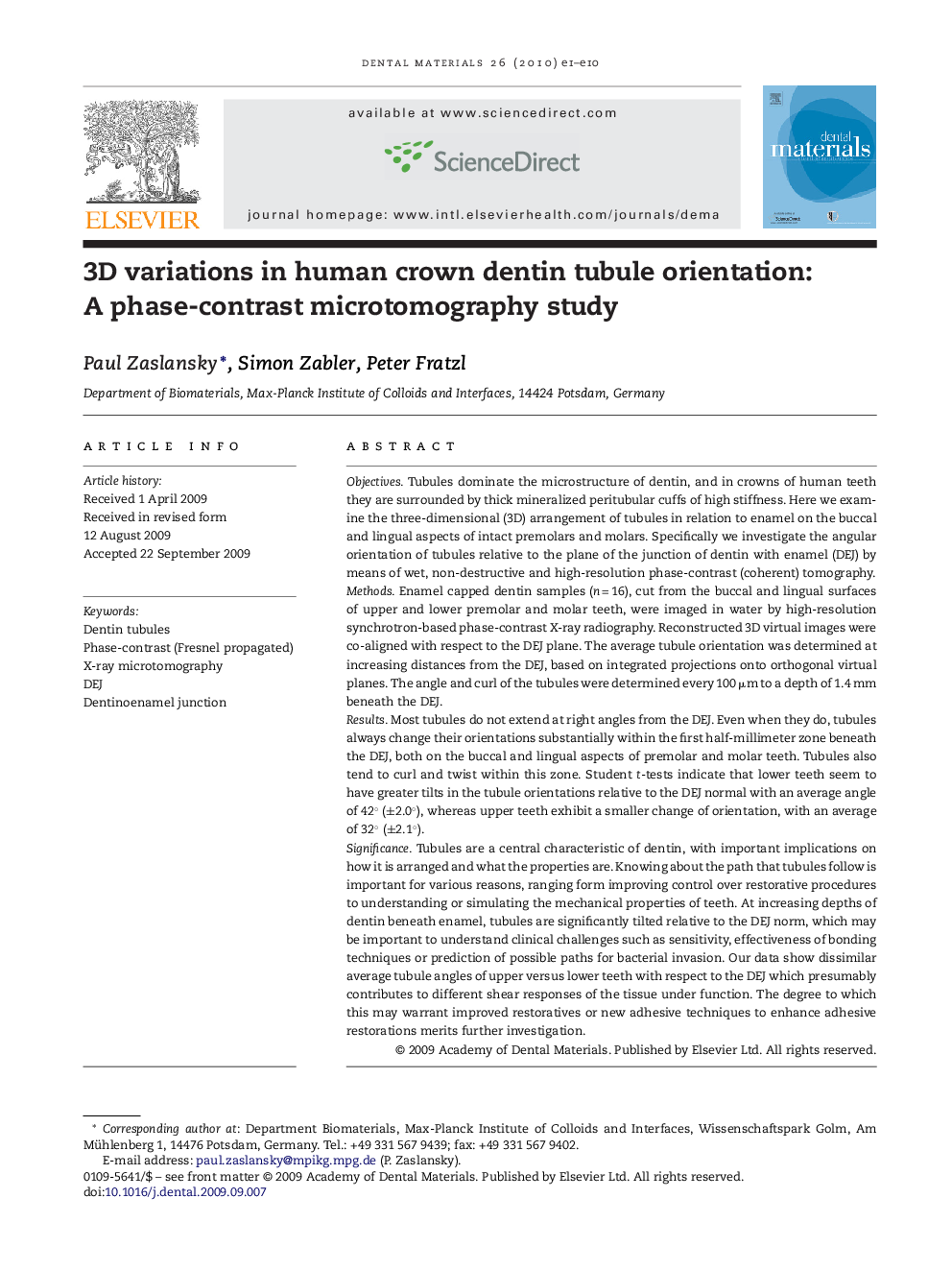| کد مقاله | کد نشریه | سال انتشار | مقاله انگلیسی | نسخه تمام متن |
|---|---|---|---|---|
| 1422384 | 986445 | 2010 | 10 صفحه PDF | دانلود رایگان |

ObjectivesTubules dominate the microstructure of dentin, and in crowns of human teeth they are surrounded by thick mineralized peritubular cuffs of high stiffness. Here we examine the three-dimensional (3D) arrangement of tubules in relation to enamel on the buccal and lingual aspects of intact premolars and molars. Specifically we investigate the angular orientation of tubules relative to the plane of the junction of dentin with enamel (DEJ) by means of wet, non-destructive and high-resolution phase-contrast (coherent) tomography.MethodsEnamel capped dentin samples (n = 16), cut from the buccal and lingual surfaces of upper and lower premolar and molar teeth, were imaged in water by high-resolution synchrotron-based phase-contrast X-ray radiography. Reconstructed 3D virtual images were co-aligned with respect to the DEJ plane. The average tubule orientation was determined at increasing distances from the DEJ, based on integrated projections onto orthogonal virtual planes. The angle and curl of the tubules were determined every 100 μm to a depth of 1.4 mm beneath the DEJ.ResultsMost tubules do not extend at right angles from the DEJ. Even when they do, tubules always change their orientations substantially within the first half-millimeter zone beneath the DEJ, both on the buccal and lingual aspects of premolar and molar teeth. Tubules also tend to curl and twist within this zone. Student t-tests indicate that lower teeth seem to have greater tilts in the tubule orientations relative to the DEJ normal with an average angle of 42° (±2.0°), whereas upper teeth exhibit a smaller change of orientation, with an average of 32° (±2.1°).SignificanceTubules are a central characteristic of dentin, with important implications on how it is arranged and what the properties are. Knowing about the path that tubules follow is important for various reasons, ranging form improving control over restorative procedures to understanding or simulating the mechanical properties of teeth. At increasing depths of dentin beneath enamel, tubules are significantly tilted relative to the DEJ norm, which may be important to understand clinical challenges such as sensitivity, effectiveness of bonding techniques or prediction of possible paths for bacterial invasion. Our data show dissimilar average tubule angles of upper versus lower teeth with respect to the DEJ which presumably contributes to different shear responses of the tissue under function. The degree to which this may warrant improved restoratives or new adhesive techniques to enhance adhesive restorations merits further investigation.
Journal: Dental Materials - Volume 26, Issue 1, January 2010, Pages e1–e10